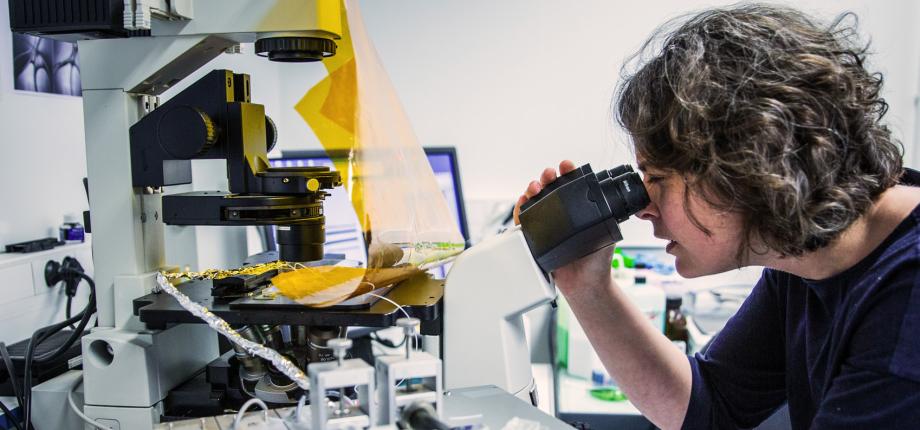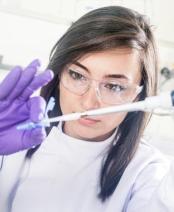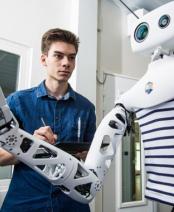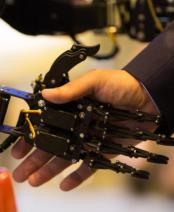Tomorrow's materials: the advantages of paper, plus resistance to humidity?

What is your area of research?
I work on the interaction between fluids and structures on a very small scale. My approach involves fluid mechanics, and the mechanics of materials applied to soft matter particularly.This field allows me, for example, to study the transport of objects in micro-channels and to see how they deform, or to capture the water contained in mist by catching the drops of fog with a textile.
Part of my research focuses on non-woven textiles. These are textiles that are not made using a weaving or knitting technique, but from fibers bonded together by other means, such as mechanical treatment (friction) or the addition of a binder. Felt is one example, as is the textile used in surgical masks. In 2020, at the start of the COVID-19 pandemic, my team and I studied the impermeability of these face masks by using shadowgraph to visualise flows and leaks when sneezing or coughing. In recent years, we have seen more and more interdisciplinarity in this field, with more dialogue between primary research and applications. I recently published a review article on the topic.
What is the ElCapiTex project?
ElCapiTex stands for "Elasticity, capillarity and imbibition in textiles". Imbibition is the ability of a material to absorb a liquid. Capillarity defines what happens at the interface of a liquid with a solid, with another liquid it does not mix with, or with a gas. It is through this phenomenon that water can move up the walls of a very thin tube, called a "capillary tube" because of its diameter, which is close to that of a hair. In everyday life, capillary action is seen for example when the bristles of a brush, separated from each other when dry, stick together after being dipped in water. By taking elasticity into account, we speak of elasto-capillarity, i.e. the way in which the material deforms when subjected to capillary forces.
The ElCapiTex project will involve a non-woven structure similar to paper, in that it will be made up of intertwined natural fibers. The main application would be packaging materials. As of today, paper and cardboard are widely used in industry for packaging. These materials can be recycled and sourced locally, but they are not resistant to humidity, which can be an issue for certain products, particularly in the food industry.
Is it possible to create a paper-like material that is not degraded by moisture, by modifying its microstructure? This is the question we will try to answer with model experiments. These will involve making fibers from a network of waterlogged polymers (called a hydrogel). The mixture of fibers and water will be drained onto a porous support, like the method used in paper mills to drain paper pulp. Once completely dry, the entangled fibers will become finer and more rigid. We will then study what happens when they are re-wetted, with a focus on elasto-capillarity and swelling of the wet material. The experimental results will be used to develop predictive models. The aim is to study the link between microstructure, deformation, and the presence of water to understand the mechanisms involved. To do this, we will use the equipment available in the laboratory, but it is also planned to acquire additional one thanks to the ERC grant, such as photopolymerization equipment for the manufacture of structures.
What about collaborations?
The project has already benefited from collaboration. I was able to carry out some initial experiments on the manufacture of a hydrogel during a research sabbatical at Princeton University in the United States. In addition to my existing network of collaborations, which I am keeping, the ERC grant will enable me to start up new ones, particularly with textile and paper specialists at other European research centres.
Furthermore, this funding is a way of carrying out research that is different from what we are used to in the laboratory. For example, it will enable us to recruit a post-doc with a more theoretical profile, complementing the experimental skills we already have. In a few months' time, new people will be joining the research team working on the ElCapiTex project. It will include 3 PhD students, 3 post-docs and several engineers with different profiles to enable us to go further.
Do you have any other projects?
As the ElCapiTex project gets underway, I have several projects coming to an end. I am currently supervising three PhD students who will soon be completing their thesis projects, and I recently handed over the Jean Marjoulet professorial chair. At the same time, I intend to continue my teaching activities and carry out my duties as vice-president of the Department of Mechanics at the École polytechnique. I am also co-director of the 'Innovative Processes and Materials' teaching and research chair supported by Saint-Gobain. Its activities include the funding of master's scholarships for international students at the Institut Polytechnique de Paris, internship scholarships for Polytechnique students, teaching in the field of materials, and research projects for example studies on the phenomenon of friction on snow and the colouring of glass.
*LadHyX: a joint research unit CNRS, École Polytechnique, Institut Polytechnique de Paris, 91120 Palaiseau, France
Funded by the European Union (ERC ElCapiTex 101087747).













